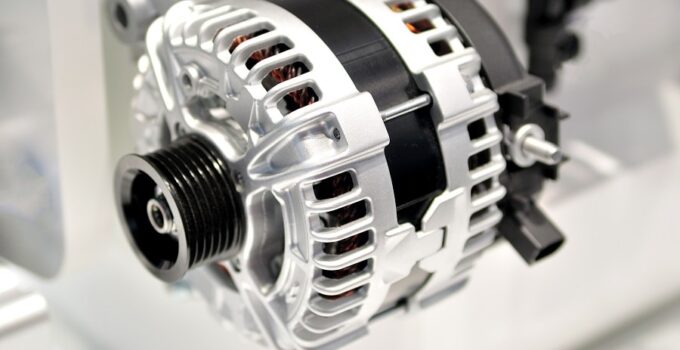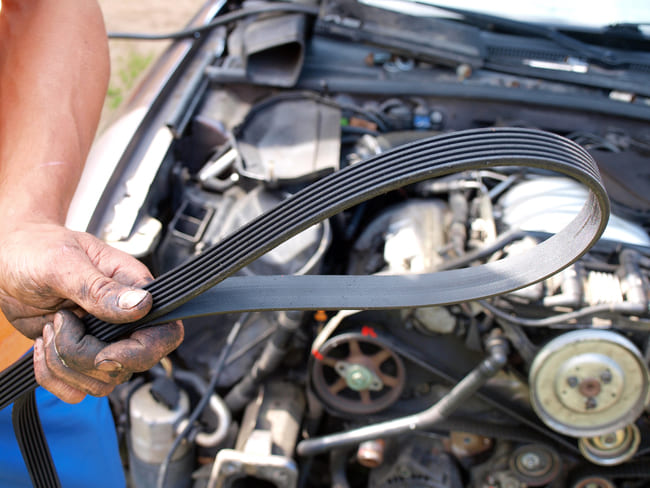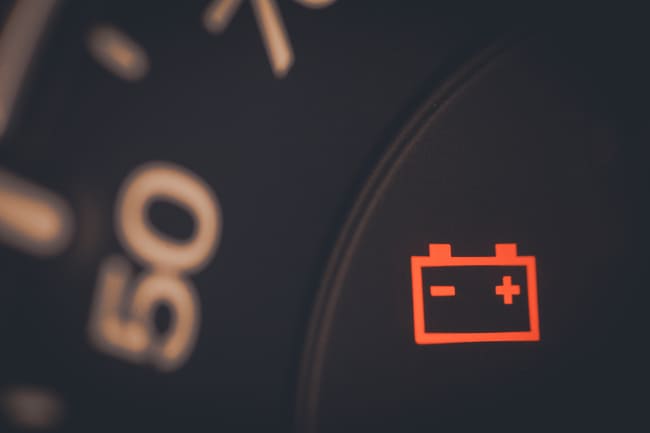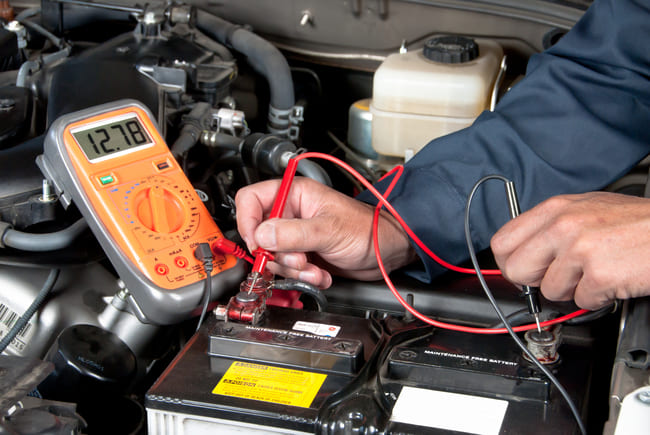
Your alternator provides your vehicle with electrical power. This also means that it supplies your ignition system with voltage so that it can ensure that the fuel in a petrol engine is ignited at the right time. In addition, it also plays an important role in charging your starter battery, so that you can start your engine again after switching it off.
Contents
How does a defective alternator manifest itself?
As previously discussed, your alternator plays an important role in charging your car battery. If you find it difficult to start your vehicle, especially in winter, there are a number of possible reasons for this. In addition to consumption that is not switched off by your ignition when you turn off the vehicle, a defective car battery can also lead to these symptoms. If you have ruled out this type of problem, the main reason for the lack of starter battery charging is a defective alternator. In such a case, you should check whether your car's alternator is charging the battery.
Other symptoms of a damaged alternator are your vehicle's lights glowing particularly brightly, dimly or flickering. In fact, such problems indicate that the voltage is not being stabilized correctly. We recommend that you check the alternator regulator in particular.
Your starter battery is also overloaded if the so-called freewheel is no longer working properly. This device is used to compensate for sudden changes in engine speed and the resulting vibrations within your vehicle's belt system. In general, this type of defect is manifested by an unusual noise development, especially when the engine is started. This also includes a typical „chirping“. Otherwise you can check the freewheeling of the alternator more easily after removing it. You should not be able to turn the outer ring in the correct direction of rotation of the belt once you hold the inner ring. On the other hand, it should be able to rotate freely in the opposite direction. If one of these two behaviors does not apply, it is defective and must be replaced.
How does a generator work?
The starter generator, often referred to as an alternator, uses engine torque to convert this kinetic energy into electrical energy to power the vehicle. Strictly speaking, this is an engine-driven alternator. The engine torque is almost always transmitted with the help of a V-belt. The alternators installed in modern vehicles not only offer very high performance, they also achieve enormous service lives. This assembly is therefore not a classic wearing part.

It is also interesting that in the 1970syears, DC alternators were the most common. These are hardly to be found today because the manufacturers prefer to use other systems. In addition to AC alternators, three-phase alternators are particularly common in vehicles today. The basis for generating electricity is what is known as induction. A magnet has to rotate in order to generate an electric field and thus electric voltage. The moving magnet is called the rotor and the copper windings in which the magnet is moved are called the stator or stator windings. However, the provision of an appropriate excitation voltage is also important for the correct and efficient functioning. This is used to precisely regulate the voltage generated by the alternator.
How to check your alternator

If you notice your vehicle having the symptoms described above or a warning light meaning „Battery“ while the engine is running, it is worth taking a closer look at your alternator. In addition to the generator itself, other components such as cables or plugs, the charge controller or the drive V-belt can also be worn out or defective. The most common alternator defect affects the generator brushes installed there, even if a V-belt that is too tight can lead to bearing defects. If you suspect something like this, you should have the armature of your alternator checked. To do this, the armature must be removed in order to use a continuity tester to detect a possible short to ground.
After that, it is definitely worth checking the cables and plugs as well as the V-belt for damage. The V-belt pretension is also important. These should only be big enough for you to be able to easily press in the strap about two centimeters with your hand. If you tension this belt too much, the alternator bearing will be damaged and the alternator armature can also be affected.

The next step is to check the voltage of your alternator. To do this, measure the voltage that is generated during operation. However, determine in advance the voltage supplied by the battery at the battery poles as long as your engine is not running. It should be around 12–12.5 volts. After starting the engine, however, the poles should have a higher voltage of around 13.5 volts generated by the alternator. In order to check whether the alternator charging power is sufficient, you should first switch on as many power consumers as possible. Now bring the engine speed up to about 3,000 revolutions per minute and check the charging voltage on the battery again. This should still be at least 13 volts (the voltage depends on the car battery charge).
If you want to check an old DC alternator with your multimeter, you should also check the charging voltage measure. However, you must bear in mind that this type of generator will not be available until around 2,000RPM can work properly. Then it should be between 13 and 14 volts at around 3,000 rpm. In addition, you can also determine the excitation current of your alternator. However, this is rather difficult to accomplish with commercially available tools, so we advise you to have this checked in a specialist workshop using an oscilloscope.
Conclusion
Motorists should know what the most common defects in alternators look like and how they express themselves. In addition, basic knowledge of testing the alternator, even without a measuring device, helps to narrow down or rule out any problems with this assembly. In addition, you should also know the tricks to test if your alternator is charging the starter battery. After all, you don't want to be stranded with your car after you've switched off your engine.
A tip from CarTipsandmore: So that you can save a lot of time and energy when changing or repairing your alternator If you can save money, it is worth relying on so-called exchangeable parts. You will receive a refurbished alternator at a lower price if you return your old and defective alternator after the repair so that it can be repaired. Alternatively, you can also overhaul your own alternator and have it fitted with new brushes or a new alternator regulator, for example. However, you will have to allow for more repair time for this.
